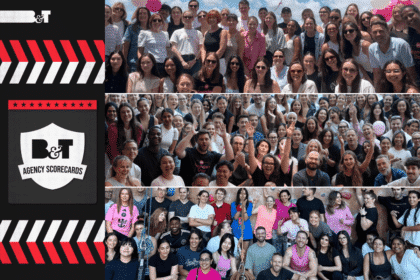In this guest post, regular B&T contributor and industry veteran Robert Strohfeldt harks back to the good old days of marketing and tells us why artificial intelligence will never replace real-life creative intelligence.
After seeing a recent report that free-to-airs are planning to use Artificial Intelligence for ratings, I tried to think back to when this “digital” madness stated. Only an idiot would deny that technology has added both quality and quantity to our lives.
To those who hanker for the “good old days”, I will give you one word to make you realise how much better things are in 2016 compared to 1916 – Dentist.
But is technology now increasing at a rate which can be overwhelming? The rate of change in advertising appears to have over taken our ability to understand all its implications and nuances. It reminds me, in some ways, of the activity and attitudes prior to the dot com crash of the late 90s.
It would be six, possibly seven, years ago that I was sent a short video on Social Media. All hype and excitement. This was where “advertising” was heading. Advertisements were reaching their use by date.
Consumers didn’t want to see, hear or read ads. They wanted relationships with brands. Brands were not products people bought (how crass), they were now personalities who became part of their everyday life. We were entering a totally new era and companies who did not have a significant social media presence within five years, would be out of business, extinct. Gone the way of the Dodo.
People would only purchase products and services from brands they had developed a relationship with. People would select their friends and brands, using the same criteria.
If you didn’t want a relationship, just a one night stand, well, there were cheap and nasty brands out there who would accommodate your devious desires, but no self- respecting brand would jump into the sack on the first date.
And to keep pace with the rapidly changing consumer, the terms in-bound and out-bound marketing were coined.
The “in-bound” marketers were aloof from the “out-bound” schmucks. The latter were stuck in last century, sending out messages – interruptive advertising such as TV, radio and print. The former didn’t interrupt anyone. Consumers came to the party; it was all one big love-in.
And to be fair to the video I saw, social media has taken the world by storm – literally billions of users. But they equated numbers of people using social media directly to its effectiveness as an advertising medium.
So, when media agencies were wooed by the Google/Facebook duopoly, they believed the bullshit peddled to them. No one questioned the methodologies used to calculate audiences, or more importantly, how these audiences used social media.
Disruption and innovation were inexorably linked to digital – rather than view the advertising ecosystem as a range of media options which included FTA TV, press, radio and print, somehow it was broken in two – digital versus traditional. (One of which had big fat commissions, but we are not like the US and UK. No one here would put their own financial interest ahead of their clients, would they?)
Fashion overtook function. Young marketing managers didn’t want to be associated with last century’s media, they had to be part of the brave new world. Rather than look at each media option with the aim of building an optimum integrated schedule, it was digital first, second and third.
For nearly four years now I have been banging on about:
- The inaccuracies of the audience measurement techniques used by Google and Facebook. (And inability to differentiate between bots and people)
- The way social media is “consumed” and how it greatly reduces its effectiveness as an advertising medium compared to traditional media.
- People don’t want relationships with brands. They want brands they can trust.
But no matter how many flaws were identified, the industry was still gung-ho about digital. Even the bloody word is opaque in its meaning. Advertising and marketing people use it with the same frequency as a teenager uses “like” – “Yes, we were, like, sitting around discussing, like, how brands can establish closer relationships with people. Blah, like, blah, like and um, like, on it goes.”
Just as in 2008 when some idiot asked “but how much are these packaged sub-prime loan investment products really worth?” and started the GFC, a few people asked “but what is a view?” and “what is the real audience figure for social media advertising?” It is true that ignorance can be bliss and why the truth is sometime referred to as “inconvenient”.
Maybe it is just me, but if traditional media is rapidly fading away, why is there is legislation in place to stop one (traditional) media proprietor reaching more than 70 per cent of the population, at any one time?
Facebook and Google are fantastic advertising platforms – just ask them. And the industry did – and believed them. Common sense should tell you that when billions of dollars are up for grabs, then the measure of performance should be carried out by an independent third party.
The AANA is now calling for some sort of professional body to develop and police standards to restore confidence “in a liquid market where millions of dollars are transacted daily in a $14 billion sector.”
In a period of 12 months we have gone from both agencies and clients swooning over social media and “digital” to a huge scandal in which the whole industry has copped a black eye for endorsing and actively peddling false information.
But this scandal has not dented the industry’s voracious appetite for all things new and shiny, Artificial Intelligence has become the latest “must have”. TV has decided that to do away with human error and bias, AI is required to measure “true and fair” ratings.
And what is AI? Or more specifically, what is the AI being used for ratings? Machine learning, where a machine, euphemistically, teaches itself based on past data/experience is referred to as AI. As is Fuzzy Logic. But why is this approach any more accurate, or less prone to outside influences than a truly random sample, analysed by powerful software? Or are they one and the same?
Ask the aviation industry what happens when computers take over nearly all “thinking” and subsequent actions that were once the tasks of pilots. In 2013 an Asiana Airlines Boeing 777 was coming in to land at San Francisco. It was a beautiful sunny morning, perfect flying weather. A slight problem arose. The ILS (Instrument Landing System), which the auto pilot locks onto to land the plane was out of order. So, two pilots, who had over 20,000 flying hours between them had to hand fly and land the plane.
“WTF is hand flying?”, I wondered. Well that is when the pilot flies the plane, not the computer. Yes, I know, I used to think a pilot’s job was to fly the plane. How 20th century. They operate the computers, who fly the plane.
Anyway, neither of these two gentlemen knew how to land a Boeing 777. They couldn’t hand fly a landing. So, it crashed killing three and seriously injuring 49. Equally concerning was the NTSB investigation and recommendations. The younger members blamed the fault on the auto-pilot that was not set up for such a contingency.
When one of the older members of the investigation panel suggested it was a pilot’s job to land a plane, the younger members of the team stared at him in disbelief. You could see in the their looks the common thought “what idiot thinks a pilot should know how to land a plane?”
Are we headed in the same direction? Will we end up with the computers doing the “thinking”, with the human input being reduced to “Computer says no.”?
Good old common sense, so the saying goes, is not so common. But with more and more reliance on machines to do the thinking on our behalf, it may become extinct.








